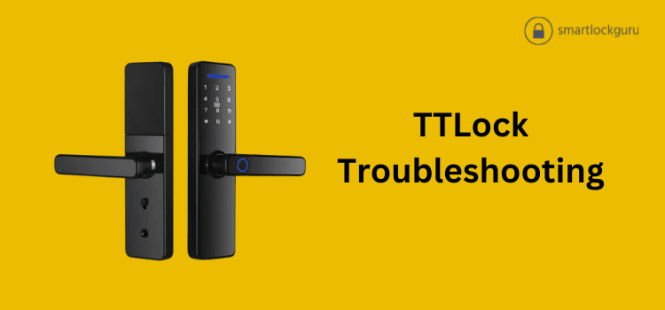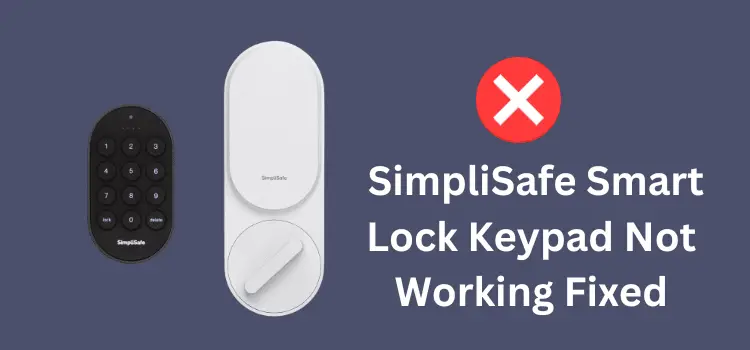

Resolve Smart Lock Glitches effectively by addressing common issues. A malfunctioning smart lock can disrupt your smart home security and convenience. This comprehensive guide will walk you through troubleshooting various smart lock problems. We’ll delve into the root causes of connectivity, setup, and functional glitches. You’ll discover simple fixes, diagnose underlying hardware problems, and learn how to navigate smart lock functionalities for optimal use. This article features a step-by-step approach, detailed explanations, and real-world examples to help you resolve your smart lock problems quickly and effectively.
Understanding Smart Lock Functionality
Core Components and Interactions
Smart locks utilize various components, including the lock mechanism, a communication module (often Bluetooth or Wi-Fi), and a smartphone app. These interact to allow authorized entry and to report the status of the lock. Problems can occur at any stage of this interaction, from the device itself to your Wi-Fi network. This understanding is fundamental in dissecting lock malfunction. A faulty connection with the smartphone app can lead to intermittent unlocking or reporting issues.
Common Symptoms of Glitches
Some symptoms include intermittent locking, failed unlocking attempts, unresponsive alerts on the app, or inconsistent reporting. These problems may range from minor inconveniences to complete loss of access control. For example, a user may find that their front door won’t lock remotely or send any indication of the lock status to their phone. This can manifest as the door seeming jammed or unresponsive. These symptoms point to potential issues that we’ll address next.
Investigating Connectivity Problems
Wi-Fi Interference and Network Stability
One potential culprit for Smart Lock malfunctions is your Wi-Fi network. Interference from other devices, network congestion, or a weak signal can all disrupt the lock’s ability to communicate. These issues can make it difficult for the smart lock to respond to commands from your phone and potentially cause errors during updates or access. Consider using a Wi-Fi analyzer app or router test tools to assess your network’s health. Also, check if any other devices in your home are experiencing similar issues. For instance, a consistent lag in your internet speed when the smart lock is active can provide further insight.
Bluetooth Connectivity Issues
Bluetooth connectivity problems can also arise, particularly if the lock requires Bluetooth for communication, potentially causing the lock’s communication with the control app to fail. If you experience issues when controlling your Smart Lock through Bluetooth, check for conflicting or unsupported Bluetooth profiles, or ensure a clear line of sight between the smart lock and any Bluetooth-enabled devices in the vicinity. Furthermore, devices can experience power fluctuations, which in turn disrupt the stable flow of data. Be mindful of this issue.
Firmware Updates and Software Issues
Checking for Recent Updates
Regularly checking for and applying firmware updates to your Smart Lock is crucial. Manufacturers often release updates to address vulnerabilities and enhance performance. Firmware updates may resolve existing bugs or improve security protocols. These updates are essential to ensure stability and compatibility with other devices in your network, such as your smartphone or other smart devices in the home. Ensure your Smart Lock has access to the latest updates, either automatically or manually. For example, the app may indicate an available firmware update, or you can initiate an update manually through your smartphone.
Compatibility and Configuration Conflicts
Incorrect configurations or incompatibility between the smart lock and other devices in your smart home can also cause glitches. Ensure that all devices are compatible with your home network and that the necessary configurations are correct. A simple configuration problem might be the root of seemingly complex errors in your Smart Lock.
Hardware-Related Problems
Inspecting the Lock Mechanism
In some instances, the issue lies within the hardware itself. A jammed or malfunctioning lock mechanism can hinder proper operation. Check for any physical obstructions or damage that might impede the lock’s movement. Visual inspection of the lock mechanism for any obvious signs of wear or damage is key. Sometimes, a simple cleaning and lubrication of the moving parts can resolve issues. For example, if the lock does not properly close and lock, there may be a problem with the latch mechanism.
Troubleshooting Tips and Best Practices
Power Cycling and Restarting Devices
Power cycling both the smart lock and your home network devices (router, etc.) can often resolve temporary glitches. This clears cached data and allows the devices to re-establish connections. A common cause of many malfunctions stems from power irregularities. For example, a brief power outage can corrupt data. Restoring power can solve the problem.
Resetting the Smart Lock
Lastly, resetting the smart lock to its factory default settings may solve issues stemming from previous misconfigurations. Consult your manufacturer’s manual for the specific reset procedure for your device. Sometimes, reconnecting the device is all that is required.
In conclusion, resolving Smart Lock glitches requires a methodical approach, encompassing device diagnostics, firmware updates, network checks, and exploring potential hardware issues. By systematically addressing these factors, users can restore the functionality of their Smart Locks. Remember to consult the manufacturer’s support resources for specific troubleshooting steps tailored to your Smart Lock model. Contact customer support if the problem persists, or consider a replacement if the issue is widespread or recurrent. For future-proofing, consider installing a backup security system.